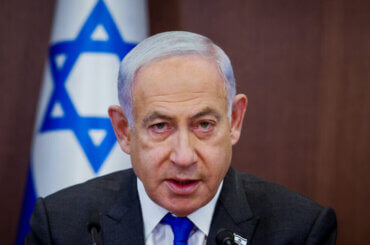Jeremy Harding, a writer for the London Review of Books, lately returned to Europe from the West Bank and had this report:
A group of writers based in Britain and North America, guests of the Palestine Festival of Literature, were just in Hebron. It was clear to us after a few hours how tough things still are for the Palestinian majority population in H2, the older part of Hebron that came under Israeli administration in 1997.
The Hebron Rehabilitation Committee now counts 101 checkpoints in an area less than one sq km, making commercial and social activity extremely hard, when it happens at all.
The Committee’s list of stores closed by military order has risen to 512, with another 1300 out of business because the economy is choked off by the occupation. Parts of H2, with its rich religious and architectural heritage, are now like a ghost town.
The HRC has been trying to encourage Palestinians to move back to H2, where they number about 30,000 to 40,000 (against roughly 400 or 500 settlers). As an incentive HRC has ensured that tenants live rent-free and owners can access free utilities as they begin restoration work.
But there’s a big disincentive too: trying to hold down a job while you live in Hebron is very difficult. Newcomers and returnees to a city where collective punishments such as curfews and road closures are commonplace just don’t make reliable workers.
The commuter model, which could give H2 the facelift it deserves, as people leave the city for work and return with income, is too vulnerable to the whims of the military.
The economic and social effects of the occupation in Hebron are obvious, but what about the psychological effects?
The city is a cauldron and the heat is on, both for the Palestinians and for the settlers.
First the Palestinians.
Responding to provocation is off limits, but buttoning up is dangerous too. Despite the many initiatives it has launched against occupation and settlement, this is a community that’s being asked to internalize a great deal of anger.
Garbage gets dumped next to your mosque; a group of settlers stones your house; as you walk through the market, waste water is tipped over you by settlers living above.
And the army is in Hebron to keep Palestinians on a tight leash, not to moderate the actions of the minority. As a member of the Hebron Vocational Training Center explained, "A settler can carry a gun, but I can get six months if they catch me with a fruit knife."
The first law for people living in the old city now is: never lift a finger against a settler or a soldier. If that rule is broken, and it is when anger boils over, residents live to regret it.
Last year, the HRC managed to get a court order to evict settlers from the Al Rajabi building in H2. It was a good day for the legal system, but residents paid the price as vengeful settlers rampaged through the neighborhood for days.
With no law enforcement mechanisms they can trust and no ability to meet force with force, Palestinians are under moral lock and key. And at least two people told me they worried that they’d learned to adjust to their situation too thoroughly. How long would it take them to deal with the normality they long for, if it ever came?
Most people we met seem to handle these issues well, but no one should underestimate the psychological strains.
Second, the settlers.
About half of them are visitors rotated on tours of duty by foreign foundations, but what has the conflict done to the people who stay put?
With the rise of the camera phone, we’re starting to get some answers. Where news crews might have been absent, or only grabbed a few seconds’ footage, discreet onlookers have been keeping records of incidents in Hebron for a while. Palestinian associations in the city, who are still putting this material together, showed some of it to the Palfest writers during their visit.
People reading this post may have seen news clips of settler children taunting Palestinian adults or stoning students on the way to school. That’s not news.
What’s remarkable about the material we were shown in Hebron is the length and intensity of these episodes, the acquiescence of the IDF and, sometimes too, of older settlers.
Slowly but surely, the warning bells start going off as you watch the footage and grasp the full significance of children conspiring with security forces to harm and humiliate defenseless people.
Do these children differ from young Palestinians who throw rocks and chant anti-occupation slogans? Palestinian youth, after all, took part in the first and second intifadas.
But the balance of power in the Occupied Territories makes a mockery of the comparison. Young Palestinians went out to confront an army equipped with tear gas, rubber bullets, live rounds and armored vehicles. Settler children in Hebron face no such threats when they pull at the headscarf of a Palestinian woman or trap a group of students on a staircase and pelt them with stones.
The conduct of settlers in Hebron is a burning political issue, but it’s also a dramatic story about mental health and inhibitions giving way under stress.
Hebron is small. Bigger precedents tell us to heed the warning signs when children take part in racial violence and armed security looks on.
Cut to the ruins of other places where this has been allowed to happen. Check the relief workers, peace-keepers, pathologists, and criminal investigators pouring in. And the psychiatric counsellors – who don’t just work with the families of victims.

